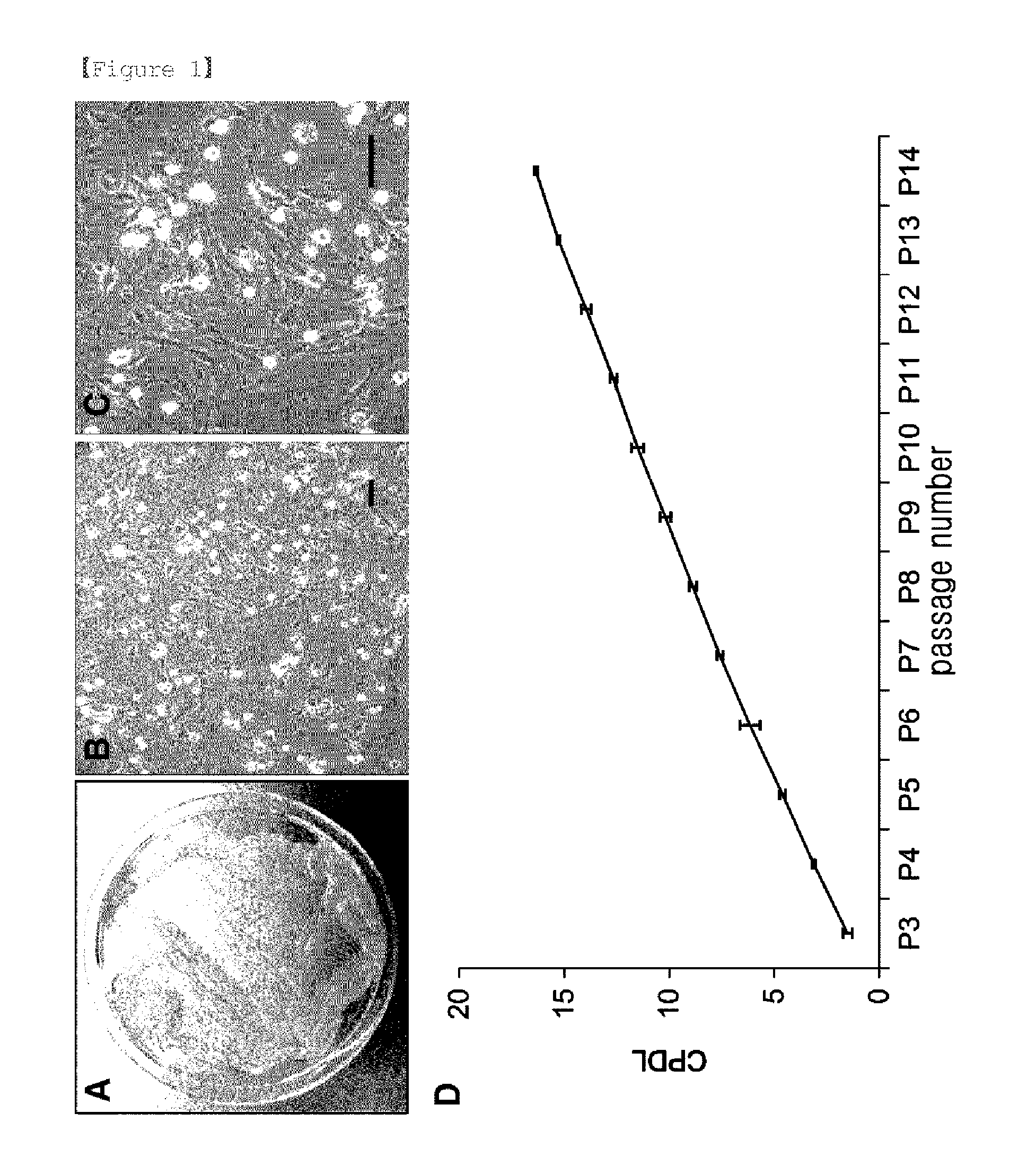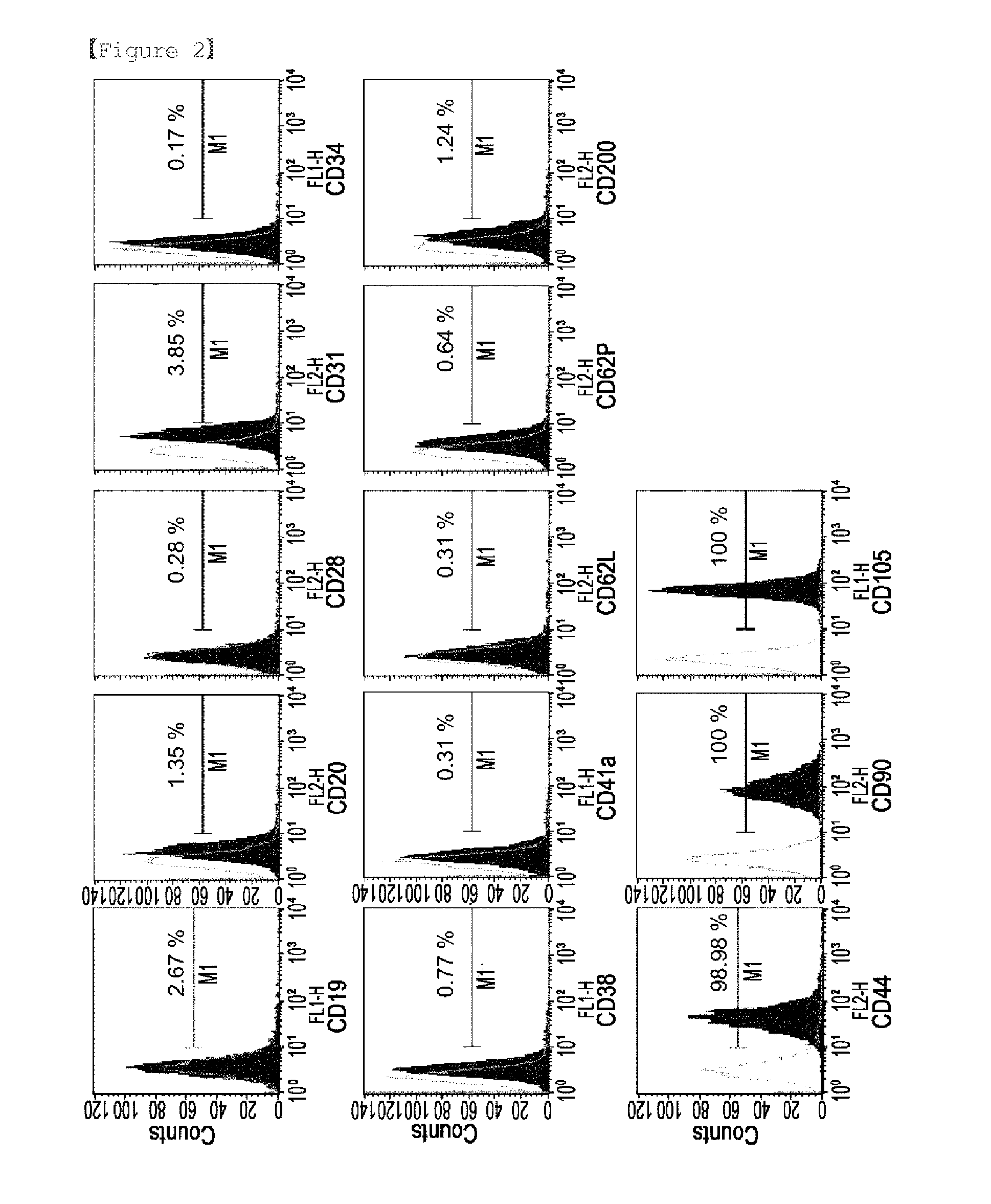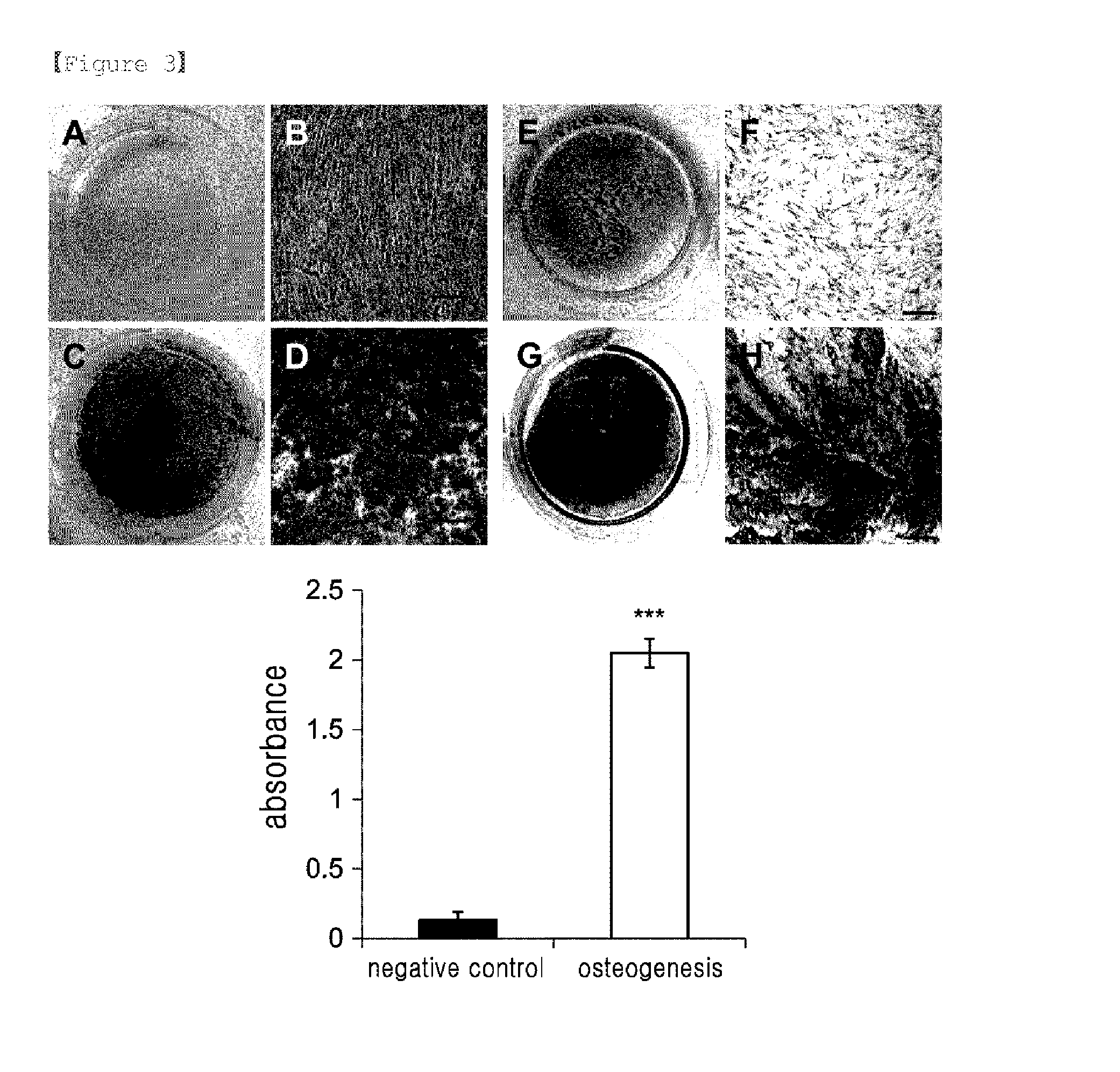Equine Amniotic Membrane-Derived Mesenchymal Stem Cells
- Summary
- Abstract
- Description
- Claims
- Application Information
AI Technical Summary
Benefits of technology
Problems solved by technology
Method used
Image
Examples
example 1
Collection of Equine Amniotic Membrane
[0056]Amniotic membranes, which were normally disposed of after separation by Cesarean section delivery, were used (the College of Veterinary Medicine, Seoul National University). These membranes were for research purposes only and were provided without cost. The separated membranes were used only for the isolation and characterization of stem cells from the tissue.
[0057]All placental samples (n=4) were obtained from pure-bred female horses after delivery in Korean private horse farms. In order to reduce the contamination and damage of the tissue, all the samples were collected immediately after delivery using sterile surgical tools. The collected placental samples were stored at 4° C. and transferred to the laboratory as soon as possible in order to avoid possible contamination from a dusty environment. The amniotic membrane was physically separated from the chorion.
example 2
Isolation and Culture of Stem Cells
[0058]Cell isolation and culture were performed by a slight modification of the previously described method [S. Diaz-Prado et al., Tissue Eng. Part C Methods, 2010; C. M. Mihu et al., Rom. J. Morpho. Embryol, 50: 73-77, 2009]. All the placental samples were collected from equine animals through Cesarean section delivery by the method of Example 1. To separate the amniotic membrane from the whole placenta, the amniotic membrane was physically separated from the chorion. Under sterile conditions, the collected amniotic membrane was washed 3-4 times with physiological saline (0.9%). To remove epithelial cells, the collected amniotic membrane was treated with trypsin-EDTA (0.25%) at 37° C. for 30 minutes and washed 3-4 times with physiological saline. Then, the amniotic membrane from which epithelial cells were removed was cut into small pieces with a surgical knife and treated with collagenase type I (2 mg / ml; Worthington biochemical, Freehold, N.J.) ...
example 3
Cumulative Population Doubling Level Analysis
[0060]The analysis of cell proliferation was performed by a slight modification of the previously described method [S. B. Park et al., Cytotherapy, 13: 1431-43, 2011]. Stem cells, including multipotent stem cells, have self-renewal capacity which is associated with continuous and steady proliferation rate [Reya T. et al., Nature, 414 (6859): 105-11, 2001]. Therefore, the estimated growth efficiency and proliferation potential of the eAM-MSCs obtained in Example 2 were determined based on the total cumulative population doubling level using the formula CPDL=ln (Nf / Ni) ln 2, wherein Ni is the initial seeding cell number, Nf is the final harvesting cell number, and ln is the natural log. The cells (5×104) were seeded into three 6-well culture plates, and after 5-7 days, subcultured. The number of final cells was counted, and 5×104 cells were re-seeded. To determine the cumulative population doubling level, the population doubling level of ea...
PUM
 Login to View More
Login to View More Abstract
Description
Claims
Application Information
 Login to View More
Login to View More - R&D Engineer
- R&D Manager
- IP Professional
- Industry Leading Data Capabilities
- Powerful AI technology
- Patent DNA Extraction
Browse by: Latest US Patents, China's latest patents, Technical Efficacy Thesaurus, Application Domain, Technology Topic, Popular Technical Reports.
© 2024 PatSnap. All rights reserved.Legal|Privacy policy|Modern Slavery Act Transparency Statement|Sitemap|About US| Contact US: help@patsnap.com










